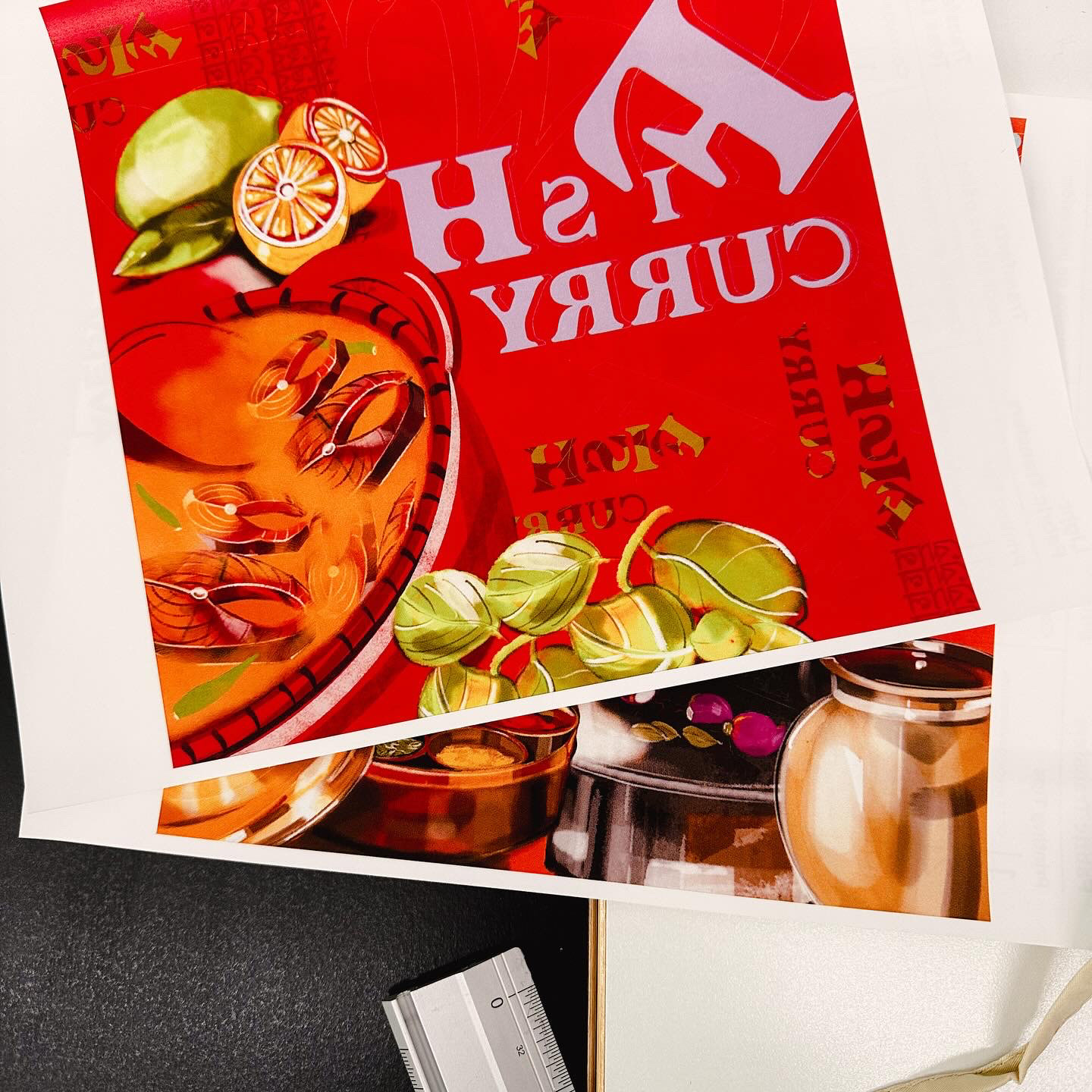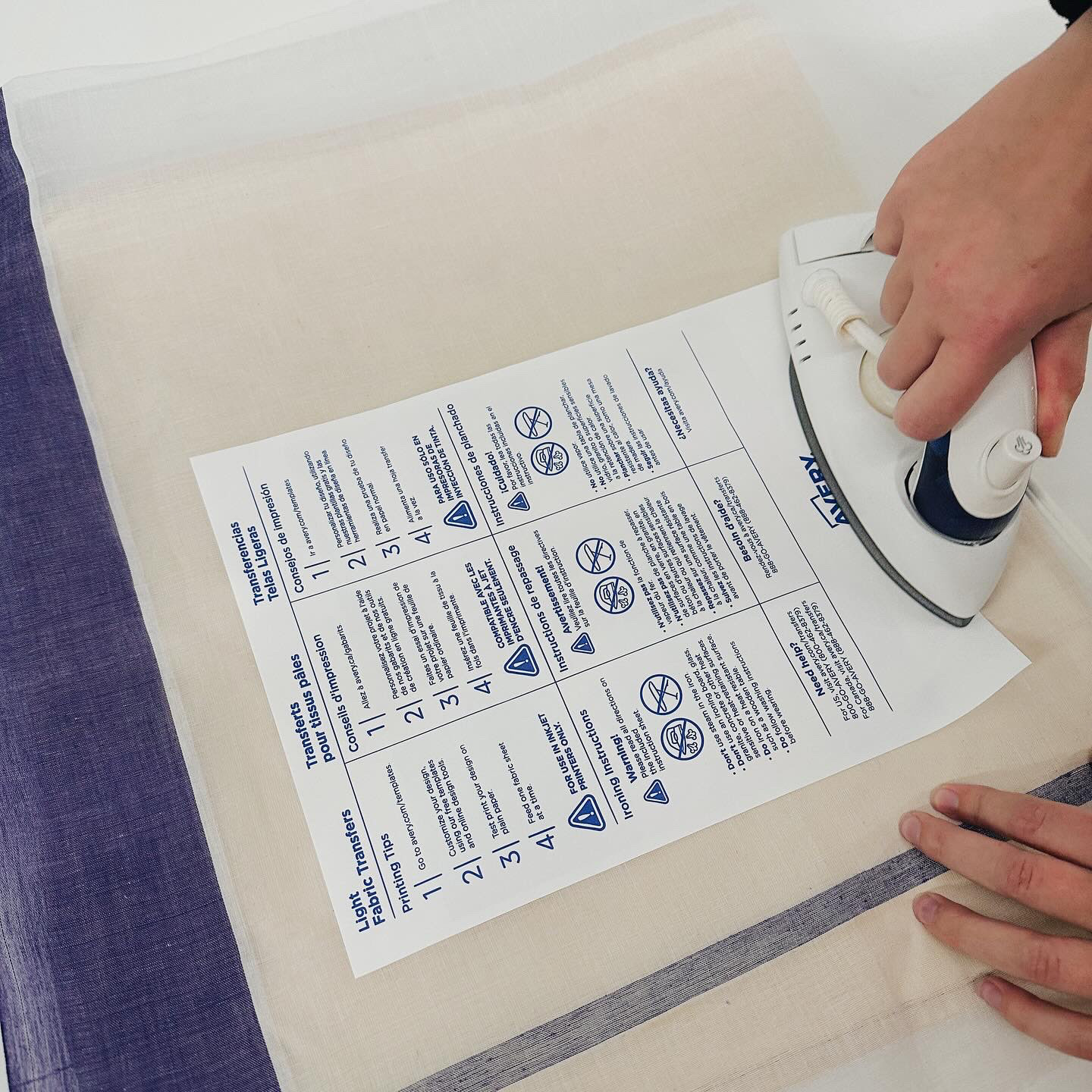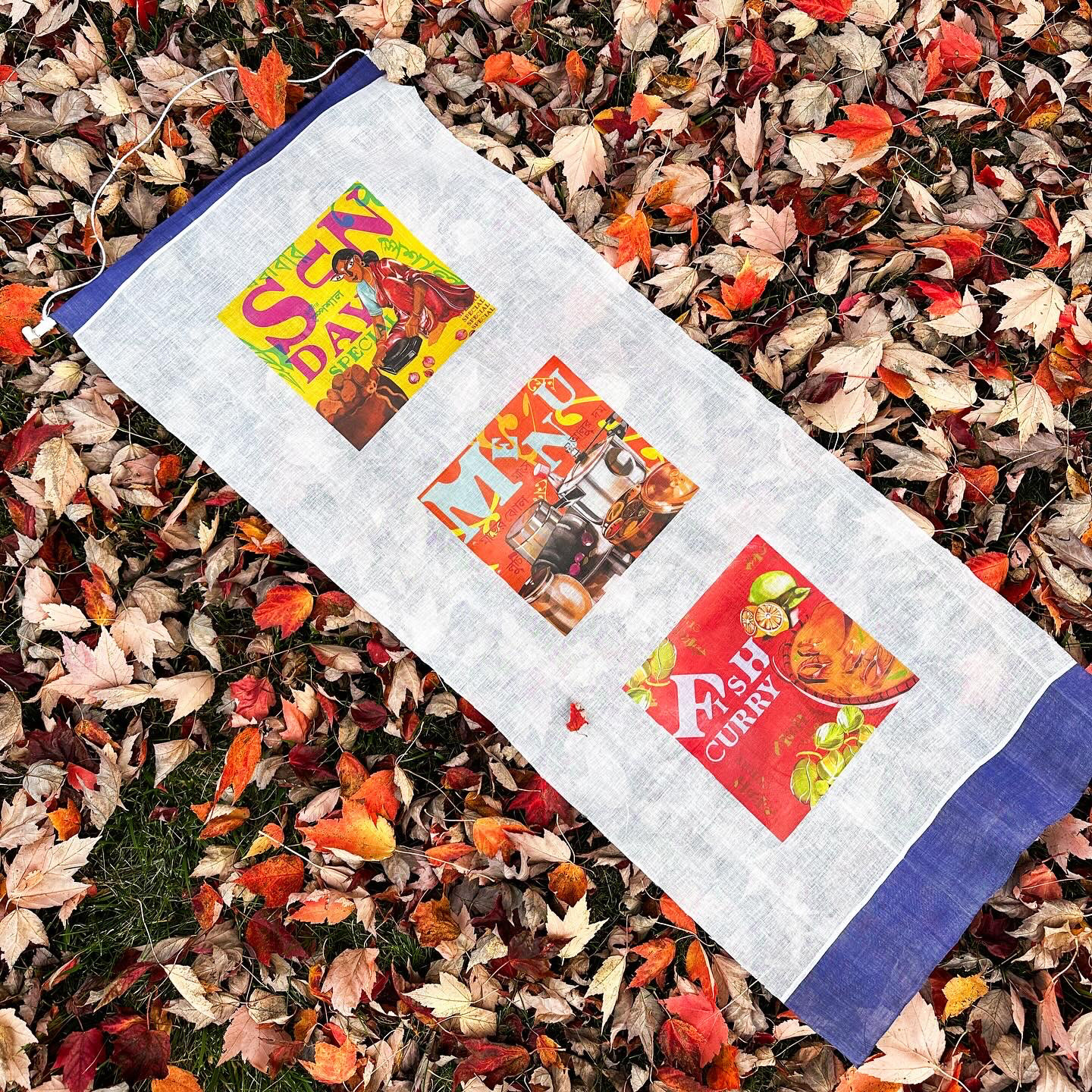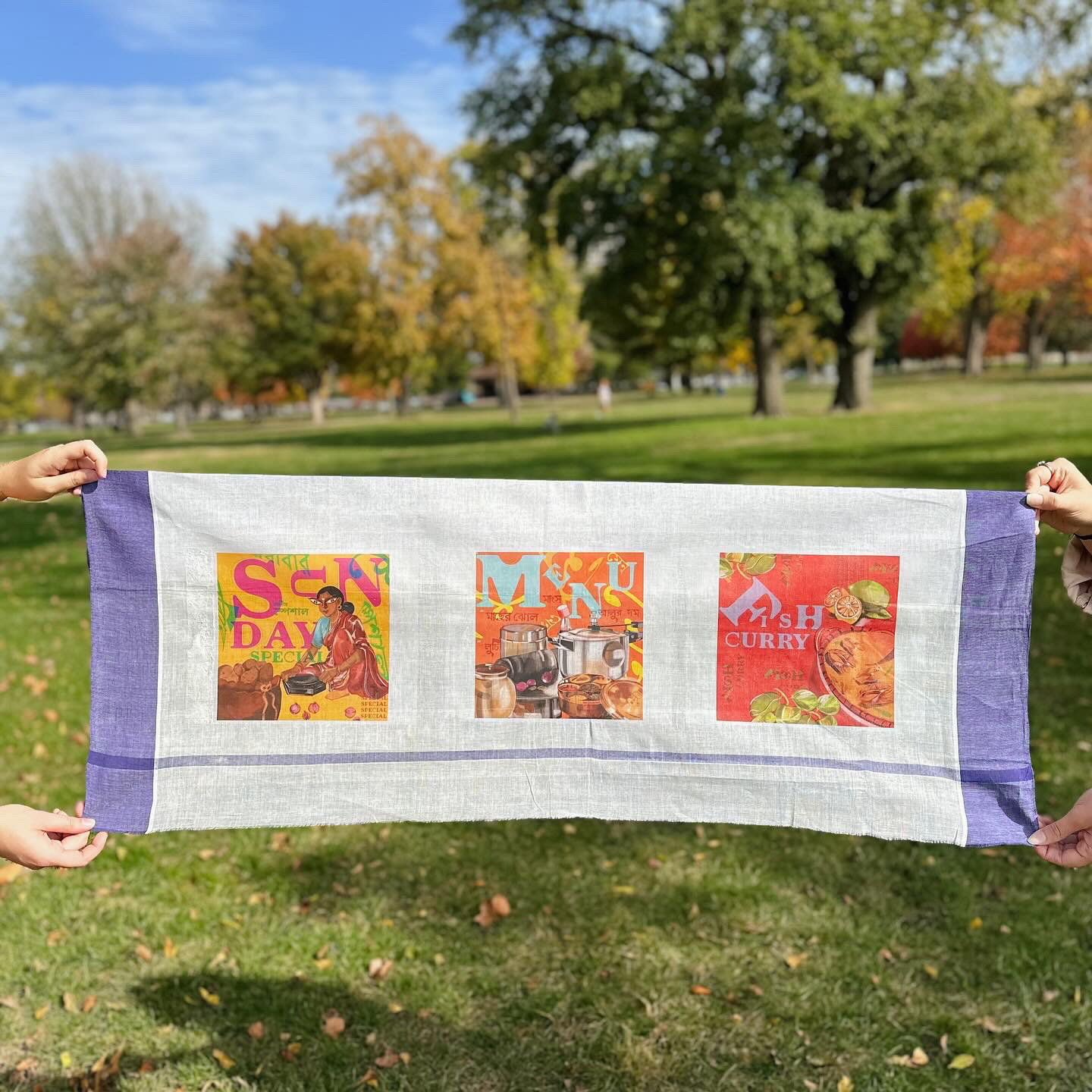Decided to unwrap a nostalgic tale of my Indian upbringing, intricately woven into the fabric of a white cotton sari—a traditional, raw-hemmed garment worn by elderly Indian women. The narrative begins with the enticing aromas of Sunday mornings drifting from our family kitchen, acting as a sensory gateway to a treasured past. Through my grandmother's culinary prowess, the story highlights the use of a "shil nora," a grinding stone, imprinting memories from my tender age. The vivid recollection portrays my grandmother, 'dida,' rhythmically crushing onions on her kitchen floor with a horizontal pestle on a rectangular stone slab, an indelible tableau etched in my memory. The kitchen ambiance demonstrates a symphony of clattering utensils and dedicated hours to culinary alchemy. The counter, adorned with jars—pressure cookers, spice containers—houses essentials like turmeric, chili, cumin, and fenugreek powder. Amid this organized chaos, the kitchen transforms into a vibrant yellow and red fish curry, permeating the house with rich flavors and a tantalizing aroma, evoking childhood joy and anticipation.
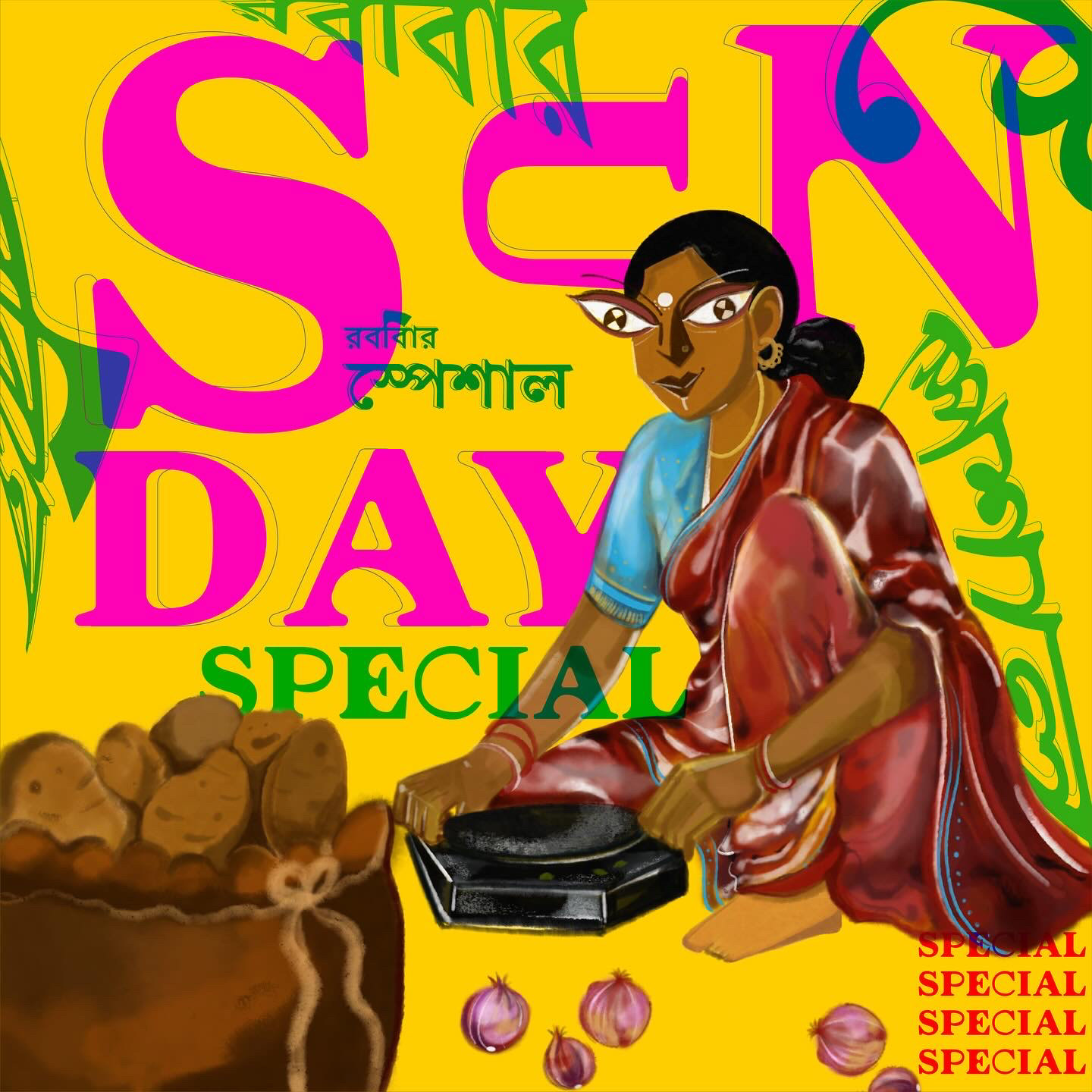

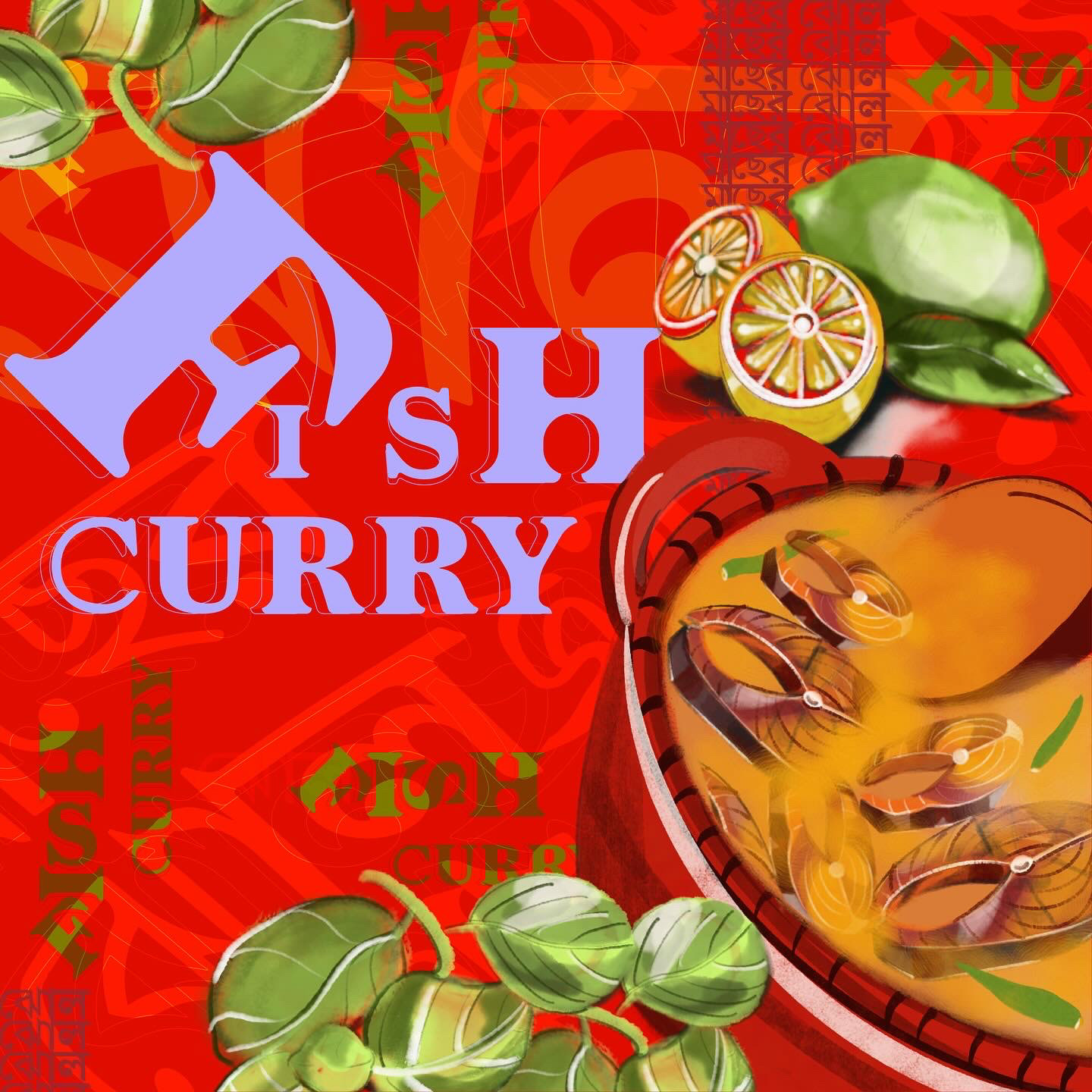
The symbolic white sari, embellished with raw blue 'par' (borders), embodies divine comfort, depicting the fabric's gentle softness and robust resilience. This work, a manifestation of weekly nourishment rituals, now carries significance in my evolving relationship with food in the United States. Portraying the South Asian kitchen not merely as a utilitarian space but as a realm of exoticism, purification, coveting, dominance, and desire. Serving as a testament to the enduring art of crafting sustenance and the deep cultural resonance embedded in culinary traditions.
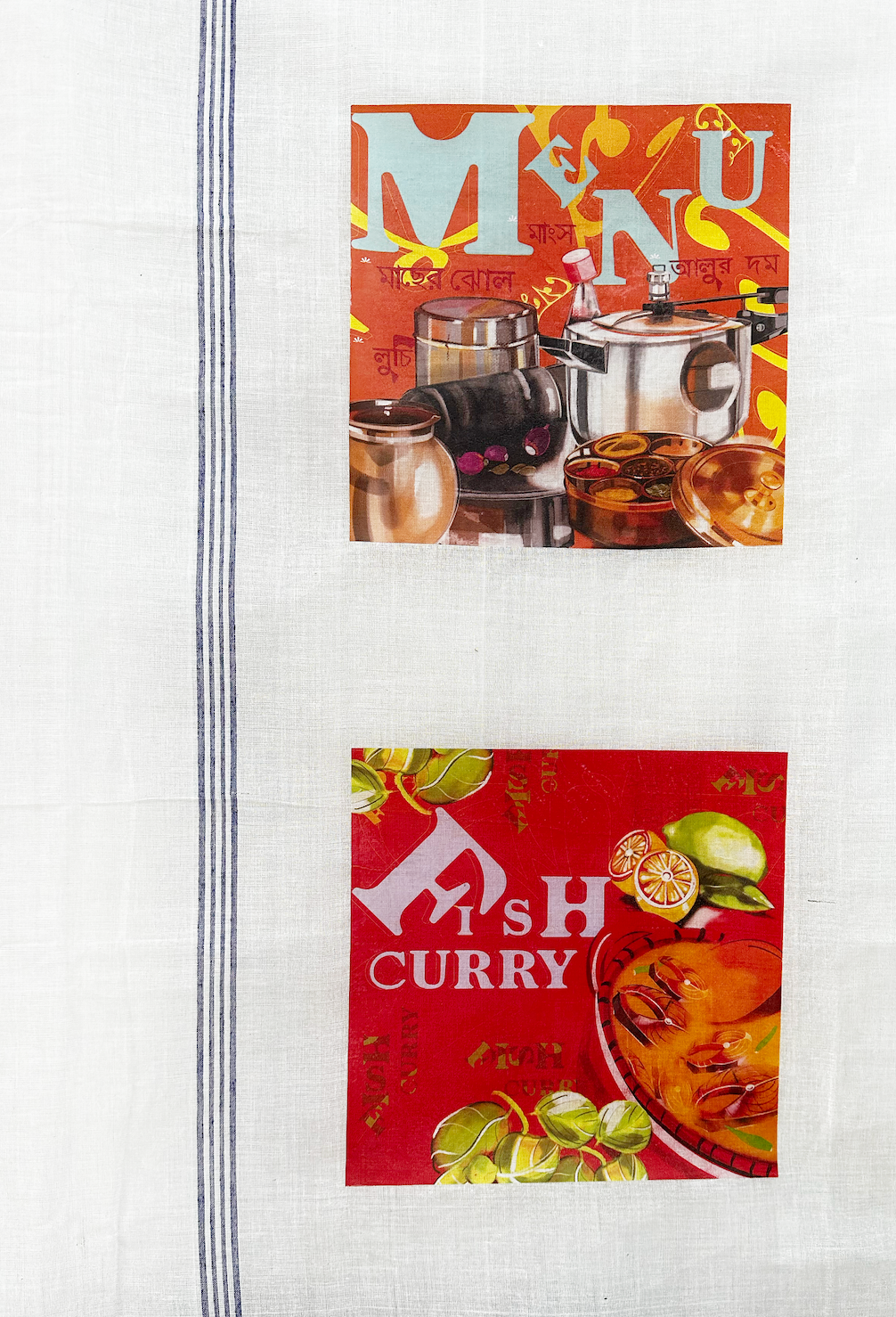
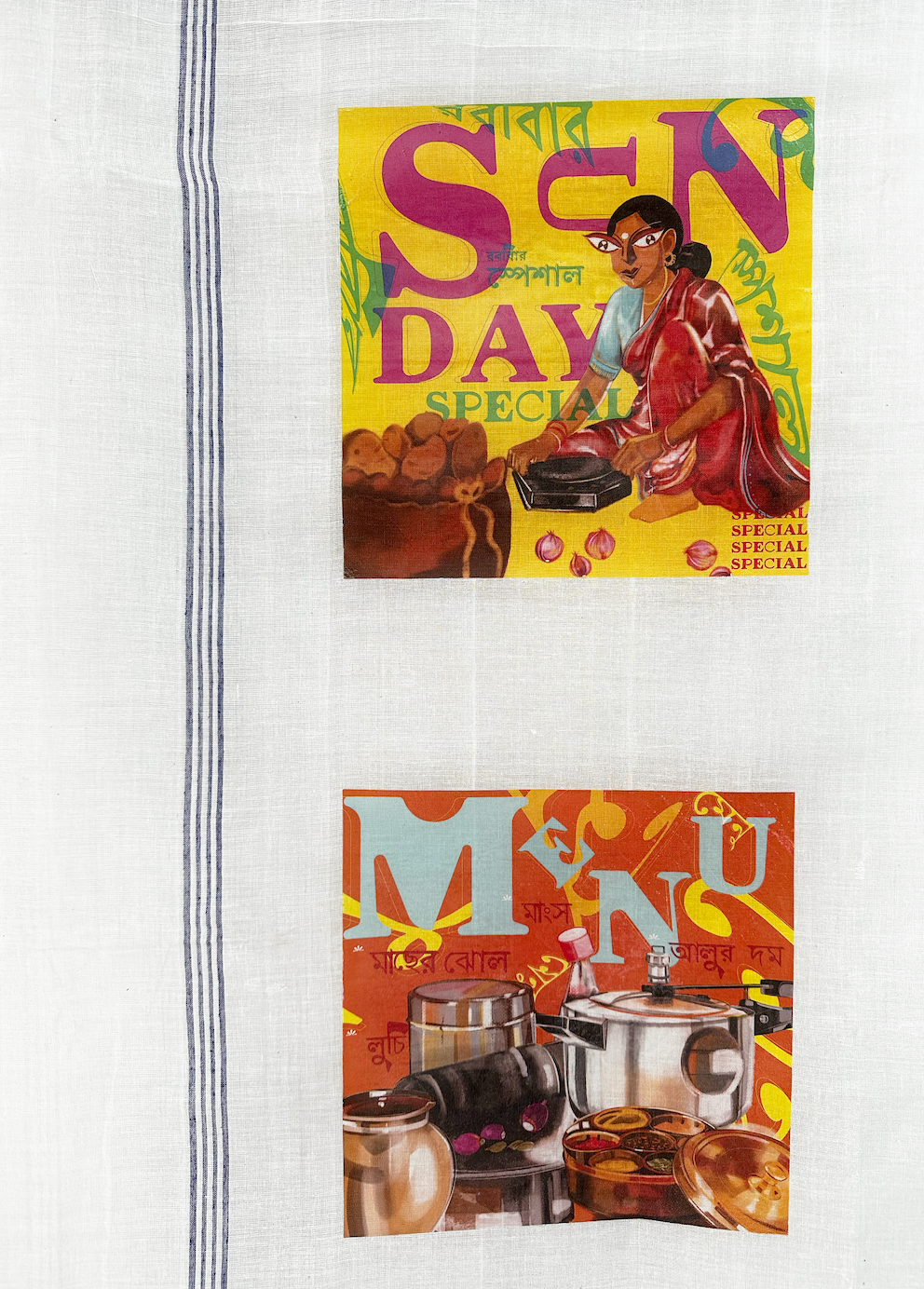
Process
